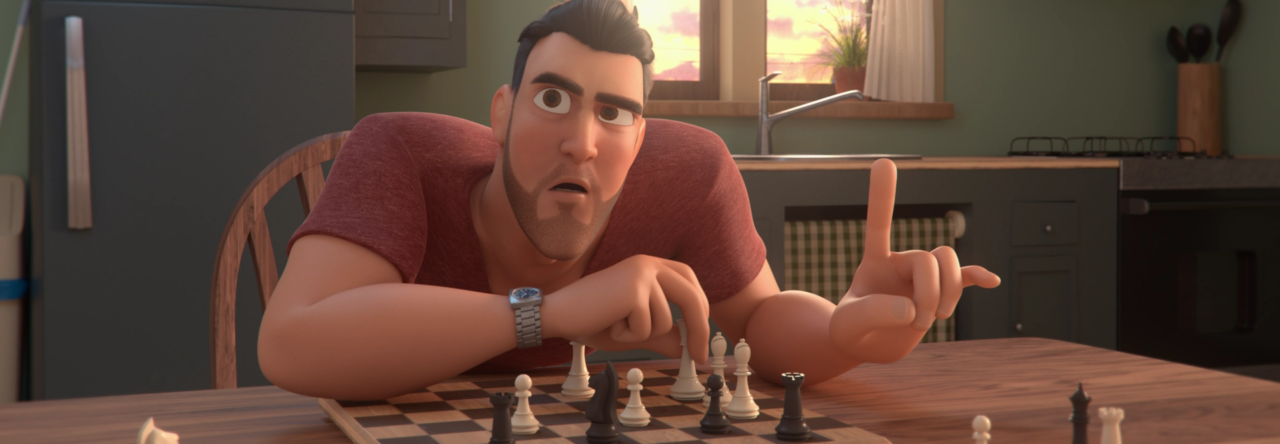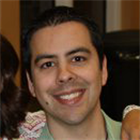AnimSchool presents: Mark Harris, an animator working at Pixar, reviews an animation by Devon Roderick!
Month: August 2011
Animator Tony Bonilla (AnimSchool instructor) sits down with AnimSchool’s Andrew Tran for an interview!
The first question I wanted to ask is, Why? Why should animators or in fact most artists keep on trying? Can you tell us a little about your background, what motivated and shaped you into professional animator. What was the most difficult part of journey for you?
 The answer to the “why” has to come from within each artist, and that will most likely be a unique and personal answer. For me it was simple. I didn’t want to spend most of my life doing something I didn’t enjoy. I’m a firm believer in following your dreams. I didn’t pursue my dream of becoming an animator until I was 28 years old. Unfortunately, I let too many years slip by because I simply didn’t know what to do or where to start.
The answer to the “why” has to come from within each artist, and that will most likely be a unique and personal answer. For me it was simple. I didn’t want to spend most of my life doing something I didn’t enjoy. I’m a firm believer in following your dreams. I didn’t pursue my dream of becoming an animator until I was 28 years old. Unfortunately, I let too many years slip by because I simply didn’t know what to do or where to start.
I grew up in a family of very limited means. As a child, the Disney shorts were so magical to me. It gave me an escape from the real world. That magic made a huge impression on me. As much as I wished I could be a part of creating something like that, I never imagined I could ever be as good as the animators that created them. In high school I figured I would be a pilot or an engineer of some sort. That changed when I saw Jurassic Park. I knew I wanted to make movies after I walked out of the theater. I had no idea what 3d animation was or that I had been exposed to it, but I knew I wanted to be a part of whatever it was that brought those dinosaurs to life.
gave me an escape from the real world. That magic made a huge impression on me. As much as I wished I could be a part of creating something like that, I never imagined I could ever be as good as the animators that created them. In high school I figured I would be a pilot or an engineer of some sort. That changed when I saw Jurassic Park. I knew I wanted to make movies after I walked out of the theater. I had no idea what 3d animation was or that I had been exposed to it, but I knew I wanted to be a part of whatever it was that brought those dinosaurs to life.
It wasn’t until 1996, when I saw Toy Story, that I realized that 3d animation existed. Ironically I was a manager at a movie theater at the time. I worked managing movie theaters, restaurants, or staffing agencies for several years before I made the decision to do whatever it took to become an animator. I made that decision in October of 2002, and got my first animation job in March of 2005. I actually took a video camera with me my first day on the job! That’s how special working in the industry was, and still is to me.
 My first attempt to learn animation was with a local “art” school that had a 3d animation program. I spent 9 months, and entirely too much money, and never set one keyframe. Fortunately I met an animator, Ray Chase, who worked for DNA Productions. He generously offered to mentor me, so I quit school and worked on “assignments” he would give me. We’d meet for lunch once a month and he would critique my work. About a year and a half later DNA had an opening for a Production Assistant. I applied and fortunately got hired. About 8 months later they offered me an animation position. The day I got that job offer is still one of the most exciting days of my life. Every job offer since then has been special as well, but I have to admit, being offered a staff position at Blue Sky Studios still feels like one of my greatest accomplishments in my career.
My first attempt to learn animation was with a local “art” school that had a 3d animation program. I spent 9 months, and entirely too much money, and never set one keyframe. Fortunately I met an animator, Ray Chase, who worked for DNA Productions. He generously offered to mentor me, so I quit school and worked on “assignments” he would give me. We’d meet for lunch once a month and he would critique my work. About a year and a half later DNA had an opening for a Production Assistant. I applied and fortunately got hired. About 8 months later they offered me an animation position. The day I got that job offer is still one of the most exciting days of my life. Every job offer since then has been special as well, but I have to admit, being offered a staff position at Blue Sky Studios still feels like one of my greatest accomplishments in my career.
The most difficult part of my journey is tough to select. I struggled financially. I wrestled with exhaustion. I lost lots of time with my wife and son. I battled self doubt, and people telling me I was foolish for chasing a pipe dream. I struggled to learn both animation and maya at the same time. In the end, the most difficult part of the journey, I think, was learning to enjoy the journey itself. I wanted to be a film animator too soon. I didn’t have the skills to get the job done, but I wanted the job. Eventually after years of hard work I was ready, and the opportunity was there.
For students who are still studying or have graduated and are seeking to animate at a professional level at a big studio, how many hours or study would it take?
 This will be different for everyone. When I made the decision to become an animator, I quit my management job that paid $40,000 a year, so I could take a job with less responsibility and shorter hours. I cut my salary in half over night so I could dedicate more time to learning how to animate. I don’t recommend everyone do this, but I was determined that animation was my future, and nothing would get in my way, including sleep. I probably got an average of 4 hours of sleep each night for over a year. Again, this isn’t a very healthy lifestyle, so please don’t take this as a recipe for success. I was already married and had baby boy, so I had to carve out time whenever I could.
This will be different for everyone. When I made the decision to become an animator, I quit my management job that paid $40,000 a year, so I could take a job with less responsibility and shorter hours. I cut my salary in half over night so I could dedicate more time to learning how to animate. I don’t recommend everyone do this, but I was determined that animation was my future, and nothing would get in my way, including sleep. I probably got an average of 4 hours of sleep each night for over a year. Again, this isn’t a very healthy lifestyle, so please don’t take this as a recipe for success. I was already married and had baby boy, so I had to carve out time whenever I could.
I also don’t believe I’m especially talented, I just work hard. That being said, the big studio job didn’t come until I had worked as a professional animator for over 3 years. So my advice is work hard, and be patient. The opportunity will come when you are ready for it, and hopefully not before.
You went from animating on feature films to animating in game studios is there a big difference in the way how you animate now?
 My career as an animator is as diverse as my jobs before. I’ve worked on television shows, video games, theme park attractions, commercials, shorts, and films. Every job has different requirements. Film requires the utmost quality as fast as you can produce it. Video games requires the utmost speed as good as you can make it. So I definitely don’t finesse my work as much as I would like to.
My career as an animator is as diverse as my jobs before. I’ve worked on television shows, video games, theme park attractions, commercials, shorts, and films. Every job has different requirements. Film requires the utmost quality as fast as you can produce it. Video games requires the utmost speed as good as you can make it. So I definitely don’t finesse my work as much as I would like to.
How did the camera angles affect the way how you animated in a game studio?
One benefit in film you aren’t afforded in games is a single camera. You can craft a performance by any means necessary to the camera. In game animation you have to make sure your work reads from all angles.
When your supervisor or instructor would say “polish up that shot” what are you looking for in your shot?

When I polish the first thing I do is add the extra finesse the shot needs. I look at all my poses and make sure they are as strong as they can be. I drop in smear frames. I add more squash and stretch in areas that would plus the shot. I make sure all of the extremities of each character are making nice fluid arcs. I add all the fine details in the feet, hands and fingers, and I spend lots of time really polishing everything in the face. The eye darts, blinks, brows, lip sync, and anything else that will add fleshy life to the face.
And lastly what do you enjoy most when it comes to animating?
This may sound corny but my favorite part is when I get a shot finaled by the director, and he says good job. I love blocking and I love polishing, but the best part is when you are forced to let go of your shot (any animator will tell you they are never truly “done” with their shot) and you get to sit back and watch the life you just created, from absolutely nothing. That still gets me. It’s a natural high for me to get a shot finaled. I think I experience that same “high” when the last shot of the film is marked complete and the whole team gets to celebrate the accomplishment.
Tony’s Web Page:
http://www.tonymation.net/
Tony’s Demo Reel:
http://www.tonymation.net/videos/Tony_Bonilla_Reel.mov
AnimSchool presents: Mark Harris, an animator working at Pixar, reviews an animation by Camilo Guaman.
You HAVE to see these samples from our Animation Principles Lecture. It’s the amazing work of many AnimSchool instructors and friends.
Take a look!
http://www.youtube.com/watch?v=FEBlYUepC6o
More to come! (Also, this is not yet rendered.)
Hello! Now lots of AnimSchool instructors have joined hands in reviewing your animation and models.
Submit yours by reading the post below!
http://www.animschoolblog.com/2010/09/3d-appeal-makeover.html


